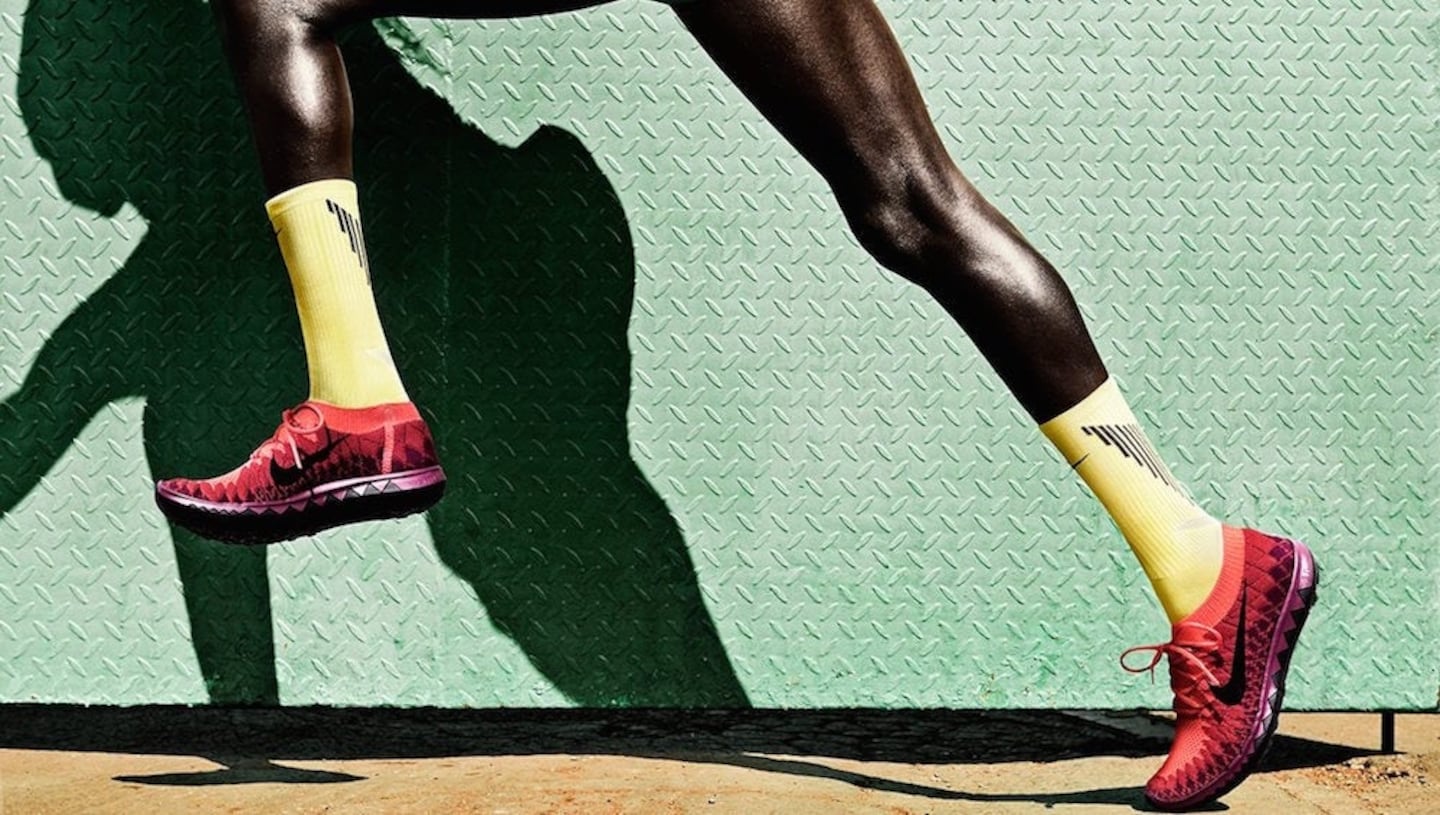
The Business of Fashion
Agenda-setting intelligence, analysis and advice for the global fashion community.

Agenda-setting intelligence, analysis and advice for the global fashion community.

In the world of sneakers, there is a growing gap between the strong brands and the weak ones.
In one camp are Nike and On, which on Wednesday topped already high expectations for sales in their most recent quarterly results. Nike reported $12.4 billion in revenue for the quarter ending in February, a 14 percent increase from a year ago, with net income of $1.2 billion, down from the same time last year but topping analysts’ forecasts.
Swiss performance running brand On, meanwhile, said it has surpassed $1 billion in annual revenue for the first time. It also generated CHF 57.7 million ($62.4 million) in net income last year, up from a loss of CHF 170.2 million in 2021.
Things could not be more different for sneaker brand Allbirds — which went public just weeks after On — and Nike’s biggest rival, Adidas. Allbirds reported its first quarterly sales decline earlier this month, and a net loss of $101.4 million in 2022. Its stock is down 96 percent since it listed on the New York Stock Exchange in November 2021. Adidas saw sales rise 6 percent in its most recent quarter, but faces the prospect of losing up to €700 million ($738 million) in 2023 if it opts not to sell its remaining inventory of Yeezy products. It’s not just Yeezy separating Nike and Adidas, however: the latter brand also saw sales in China plummet 50 percent in the final three months of 2022; Nike saw more modest declines in the final months of the country’s zero-Covid lockdowns, and reported a 1 percent sales increase in the quarter ending Feb. 28.
ADVERTISEMENT
While it’s difficult to directly compare the four brands — On and Allbirds are much smaller than Nike and Adidas, for starters — their wildly divergent trajectories come down to one common factor: product. Nike and On have been able to deliver on trends and customer demands; Adidas and Allbirds have not.
“Nike and On are just more in tune with consumers,” said Jessica Ramirez, senior retail analyst at Jane Hali & Associates. “When you look at what’s working, it’s a lot of running, trail running and hiking. Both brands have seen growth on those fronts.” Nike, for instance, highlighted its Pegasus 4 Trail running shoe in its earnings call Wednesday.
On the other hand, Adidas and Allbirds have had far fewer breakout styles in recent months. Before its Yeezy partnership, Adidas gave Nike a run for its money with the popularity of its Stan Smiths. But that was six years ago, said RBC Capital Markets director Piral Dadhania. Nike has seen its Air Force One sneaker dominate the market for a couple of years now, he added.
Perhaps the biggest strength that Nike demonstrated Wednesday was its control over distribution. In both direct and wholesale channels, the brand posted double-digit growth. (On, too, increased its DTC sales by 61 percent.)
Ahead of the report, analysts and investors were eager to see whether Nike would make progress in addressing its inventory pile-up in North America, and whether discounting would eat into gross margins.
While gross margins did decrease 330 basis points to 43.3 percent, CFO Matthew Friend said in a statement that the retailer has “made tremendous progress on inventory.” Inventory levels were up 16 percent year-over-year — far lower than the 44 percent year-over-year glut that it confronted last summer.
Nike reduced that inventory in part by rekindling its relationship with wholesale retailers. The brand had cut ties with many third-party sellers in recent years, but partially reversed course in recent months as it looked to move a mountain of unsold shoes. Earlier this week, Foot Locker CEO Mary Dillon said the chain had “renewed” its relationship with Nike.
“Given our brand momentum we now intend to move through even more units than we had previously considered,” Friend said in the earnings call.
ADVERTISEMENT
While Nike relied on many of its wholesale partners in North America to move through excess inventory, it remained disciplined in its DTC segment in China — a key reason why the retailer is able to maintain stable sales in the region while others saw sales dip in China’s rocky reopening the past couple of months.
Analysts say Nike is well positioned to capitalise on the reopening of China, thanks to its pre-existing dominance in the market and the fact that its next biggest rival, Adidas, has lost considerable market share since the pandemic.
“Last year’s Covid shutdowns in China had a much larger relative impact for brands like Adidas that rely on wholesale partners because their inventory is effectively stranded,” Dadhania said. “Nike was still able to service its customers in the country through its own ecosystem, meaning it came out of 2022 in much better shape than its rivals.”
Both Nike and On have been able to capitalise on the popularity of running shoes in recent months, while Nike also had a boost from basketball and demand for its Jordans line. Riding the running wave along with them is Deckers-owned Hoka, whose net sales were up 90 percent year-on-year in its fiscal quarter ending Feb. 3. The brand surpassed $1.3 billion in revenue last year.
“If you look at brands in sneakers and activewear that are doing well, it’s Hoka, On, Asics, Brooks, New Balance and Salomon,” said Ramirez.
While Nike’s Pegasus and Air Zoom running lines are perennial best-sellers, Adidas doesn’t have a popular marquee style in the category. Allbirds, meanwhile, “is more of a walking shoe,” Ramirez said. “They’re not part of the equation, and I don’t see much innovation there.” The company acknowledged as much earlier this month, with co-CEO Joey Zwillinger telling CNBC the brand had “lost a bit of sight of what our core consumer fell in love with us for in the first place.”
As part of its earnings announcement Wednesday, Nike also raised its full fiscal year guidance from mid-single digit growth to high-single digit growth.
Nike and On report results this week, and will likely take a more upbeat view of the sneaker market than their rivals. That, plus what else to watch for this week.
The German sportswear giant hinted it could try to sell already produced sneakers from the collaboration, but predicted its first annual loss in over three decades.
The footwear company says it has cracked its holy-grail goal to develop a net-zero carbon shoe. All investors want is a path to profitability.

Daniel-Yaw Miller is Senior Editorial Associate at The Business of Fashion. He is based in London and covers menswear, streetwear and sport.

Cathaleen Chen is Retail Correspondent at The Business of Fashion. She is based in New York and drives BoF’s coverage of the retail and direct-to-consumer sectors.
As the German sportswear giant taps surging demand for its Samba and Gazelle sneakers, it’s also taking steps to spread its bets ahead of peak interest.
A profitable, multi-trillion dollar fashion industry populated with brands that generate minimal economic and environmental waste is within our reach, argues Lawrence Lenihan.
RFID technology has made self-checkout far more efficient than traditional scanning kiosks at retailers like Zara and Uniqlo, but the industry at large hesitates to fully embrace the innovation over concerns of theft and customer engagement.
The company has continued to struggle with growing “at scale” and issued a warning in February that revenue may not start increasing again until the fourth quarter.